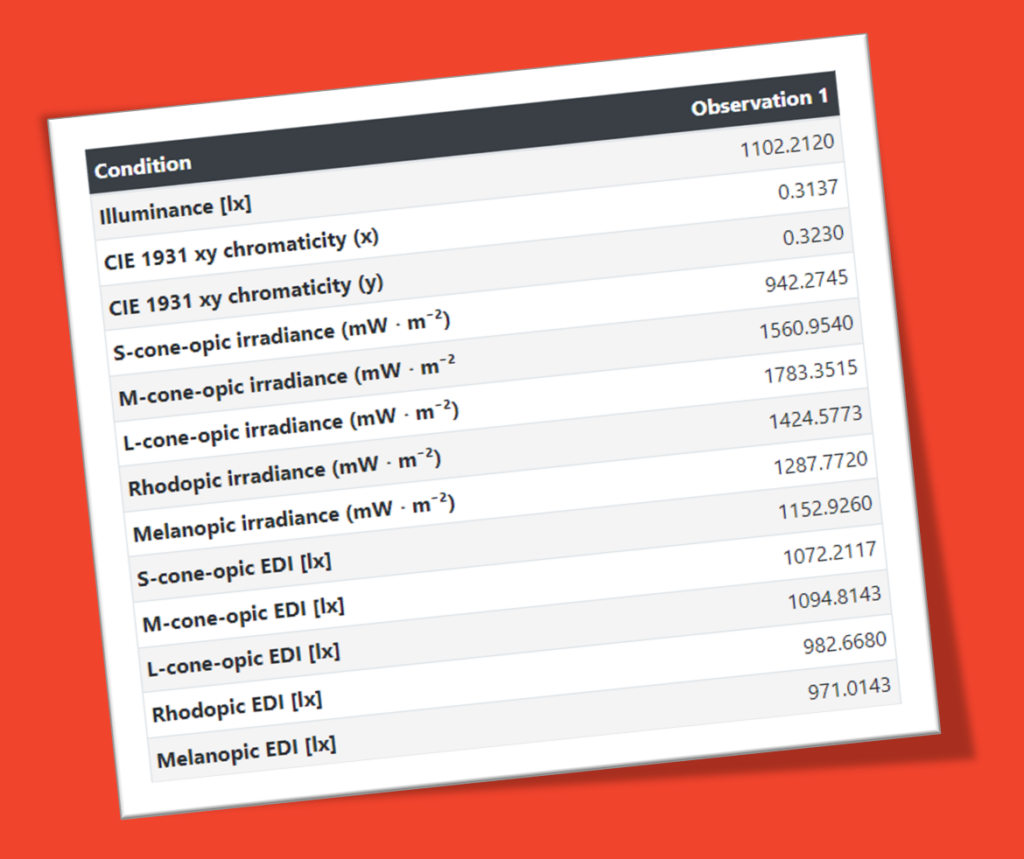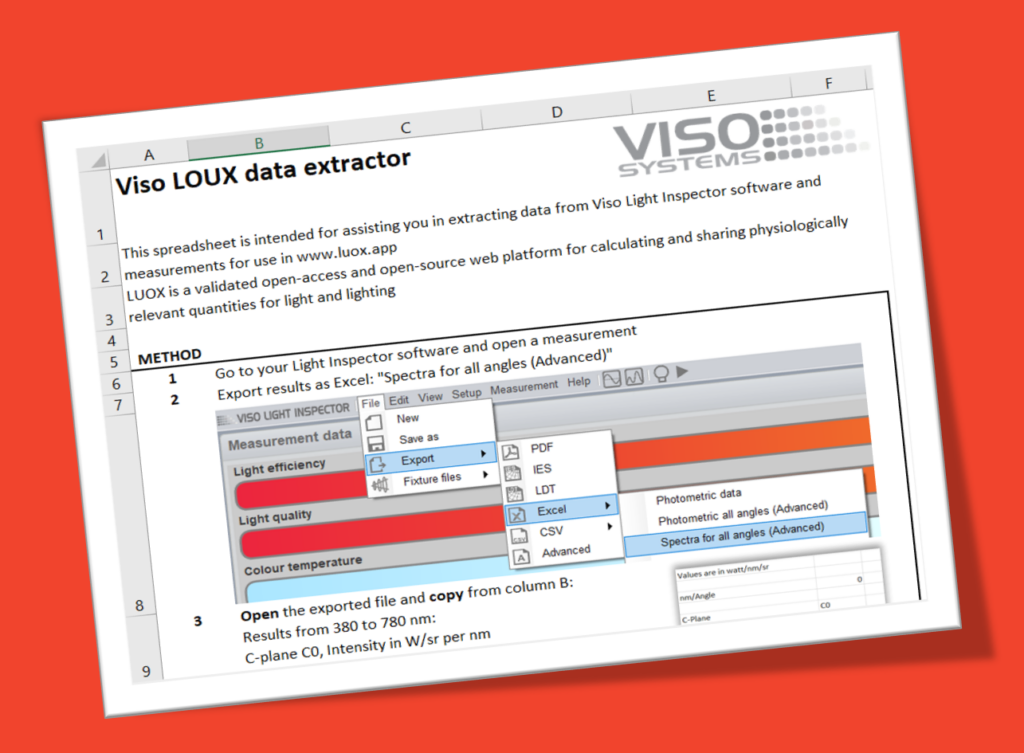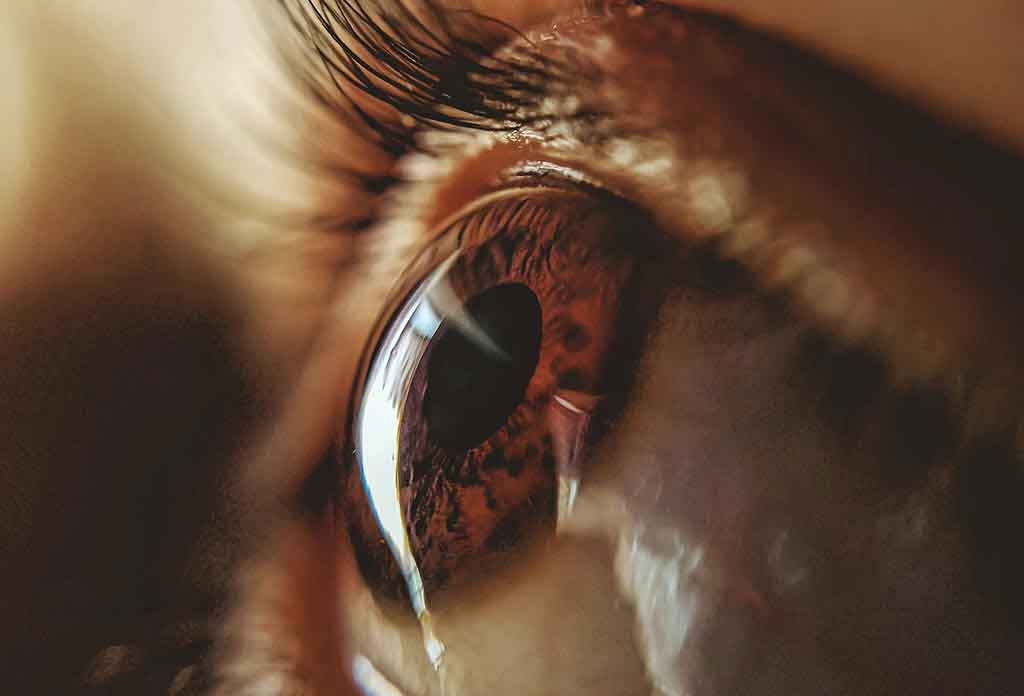
“A high melanopic EDI during the day is usually supportive for alertness, the circadian rhythm, and a good night’s sleep”.
This is what the CIE concludes in a position statement dated October 2019.
So how do I retrieve the melanopic EDI related to a specific light source?
First of all, you need to know the position of the observer’s eye in relation to the light source. What counts is the amount of light actually hitting the retina.
As Viso light measurement systems record spectral power distributions (SPDs) in all directions, you can also get a hold of the spectral distribution and intensity in a given direction.
With the SPD information and the distance from the light source to the observer’s eye, you are ready to calculate.
LOUX is a free-to-use, CIE-validated webpage that offers you a way to calculate a variety of quantities related to human physiology. LUOX helps to report the stimulus conditions involving light as an intervention in chronobiology, sleep research, and environmental psychology experiments.
All Viso systems allow you to extract data for use in LUOX via the Light Inspector software and the excel output option.
Get your full LUOX lighting data output with just a few clicks. Read more here.



